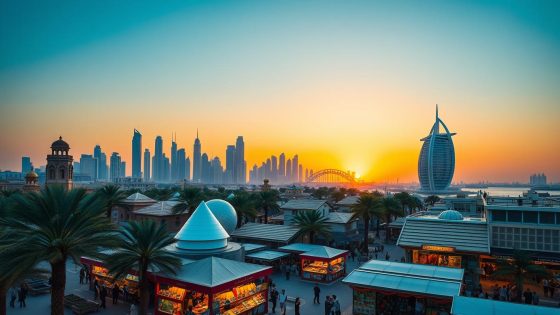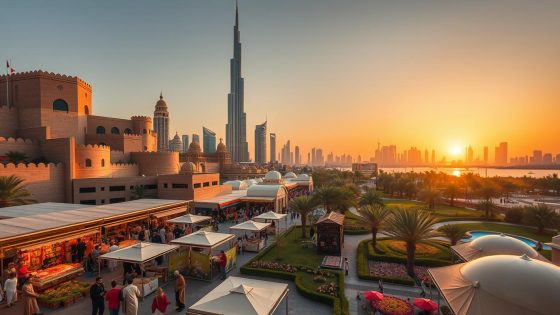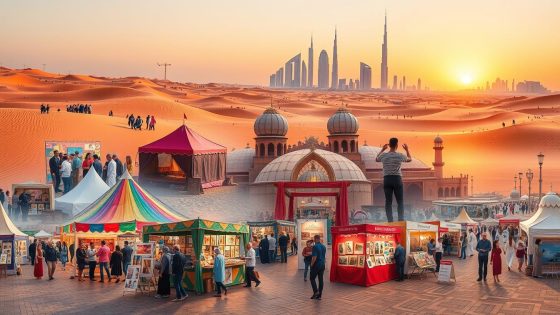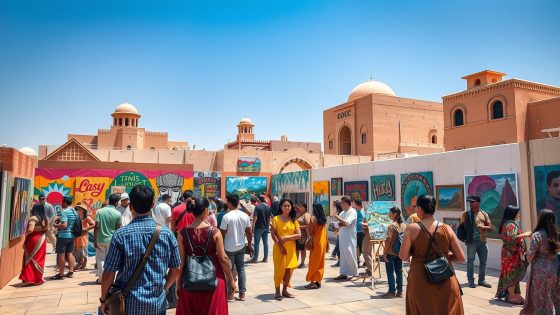Contents
The United Arab Emirates is a treasure trove of cultural lessons. It has transformed from traditional roots to a global cultural leader. With 89% of its people being expatriates, the UAE is a melting pot of cultures.
Islam is at the heart of UAE culture, shaping business with honesty and fairness. The idea of “Barakah” promotes ethical business conduct. Daily prayers and Ramadan are respected in the workplace.
The UAE blends its heritage with modern innovation. It modernizes quickly while keeping its history alive. This mix strengthens its cultural identity and welcomes global influences.
Emirati art is key to this cultural journey. Dubai Culture promotes Arabic calligraphy through projects like Ornamentation and Gilding. The Al Jalila Cultural Centre For Children supports young talent, helping the nation’s art grow.
Historical Roots of UAE’s Cultural Shift
The UAE’s cultural history is long and varied. It started with Bedouin tribes and now is a global arts center. The discovery of oil in 1958 was a big change, starting the UAE’s fast growth in the arts.
Impact of Oil Wealth on Arts
Oil money helped build cultural places, like museums and galleries. This led to a big increase in the UAE’s arts scene. The country became a place where artists from all over come to show their work.
| Year | Cultural Milestone |
|---|---|
| 1971 | Formation of UAE |
| 1984 | Olympic debut |
| 2009 | First Abu Dhabi Grand Prix |
| 2018 | FIFA Club World Cup hosted |
Evolution of Emirati Heritage Festivals
The UAE’s cultural events have grown a lot. Festivals like Al Dhafra show off Bedouin traditions. At the same time, they feature modern art, showing the UAE’s mix of old and new.
Now, the UAE’s culture shows its rich history and bright future. With most people living in cities, these places are full of cultural exchange. The high literacy rate helps more people get into arts and culture, making the UAE a lively place for creativity.
Strategies Behind Cultural Success
The UAE’s cultural success comes from smart investments in art and education. Schools focus on UAE arts, making history interactive. This approach has changed education in the UAE.
Investments in Art and Education
The UAE puts a lot of effort into keeping its heritage alive and growing its art. The Sharjah Heritage Days festival, for example, celebrates traditional crafts every year. This event supports Emiri Decree No. 5, which protects Sharjah’s crafts and folk art since 2017.
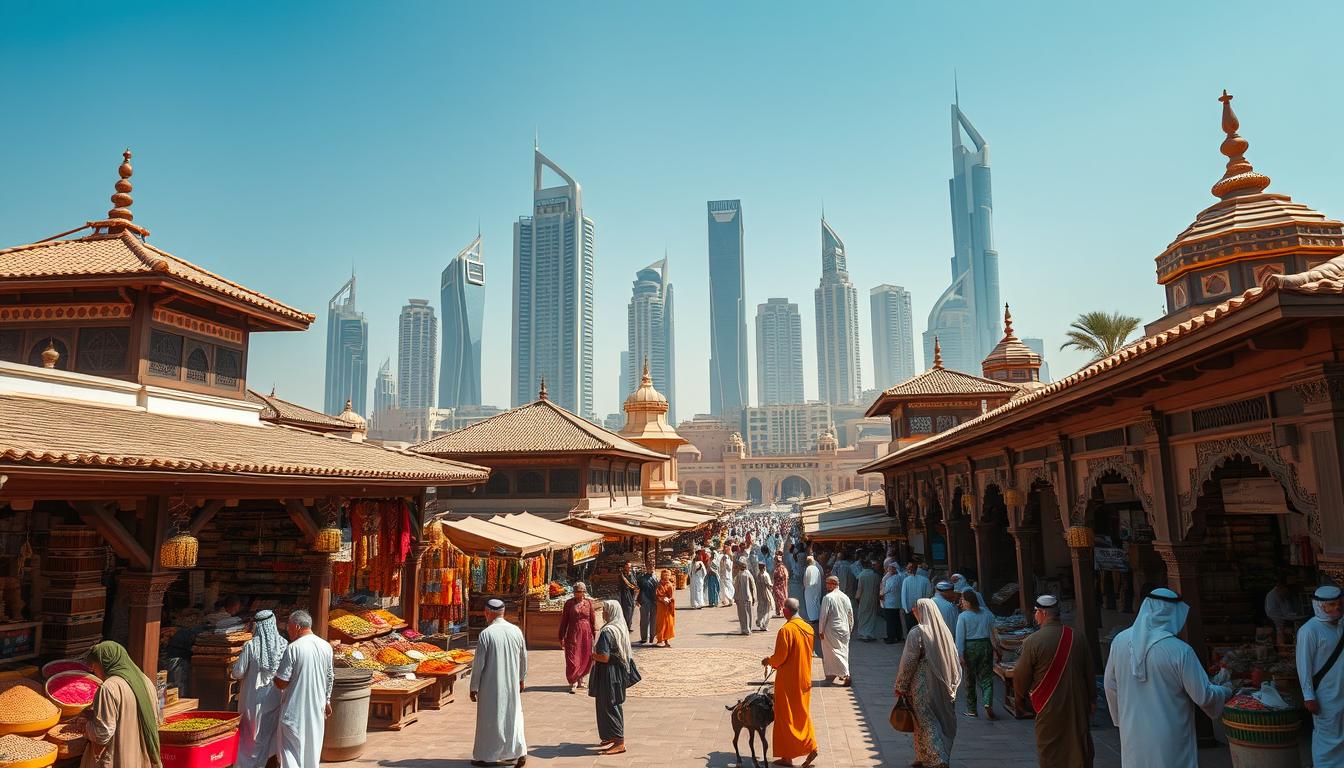
Educational efforts are key to the UAE’s cultural plan. A study of nine UAE schools showed high achievement in Arabic, Islamic Studies, and Social Studies. This success comes from three main strategies:
- Curriculum integration
- Community engagement
- Parental involvement
Encouragement of Public-Private Partnerships
Public-private partnerships are behind many UAE cultural projects. The Sharjah Art Foundation, for example, offers workshops on traditional Emirati crafts. These partnerships also help with big events like the Sharjah International Book Fair, which draws over a million visitors each year.
| Initiative | Impact |
|---|---|
| Sharjah Heritage Days | Preserves traditional crafts |
| UNESCO Creative City Recognition | Promotes Sharjah’s cultural significance |
| Mleiha Archaeological Centre | Showcases historical artifacts |
| Sharjah International Book Fair | Fosters literary engagement |
These strategies aim to build a lasting society while keeping cultural identity strong. Suggestions include more teacher training on culturally responsive teaching and more funding for community programs.
Learning from Milestones in UAE Arts
The United Arab Emirates has made big strides in the performing arts. It offers lessons for the global arts community. The country’s arts journey blends tradition and modernity, creating a unique cultural scene.
Establishment of International Festivals
UAE’s love for the arts is clear in its international festivals. These events have put the country on the global cultural map. The Dubai International Film Festival helps emerging filmmakers, while Abu Dhabi Art showcases contemporary art.
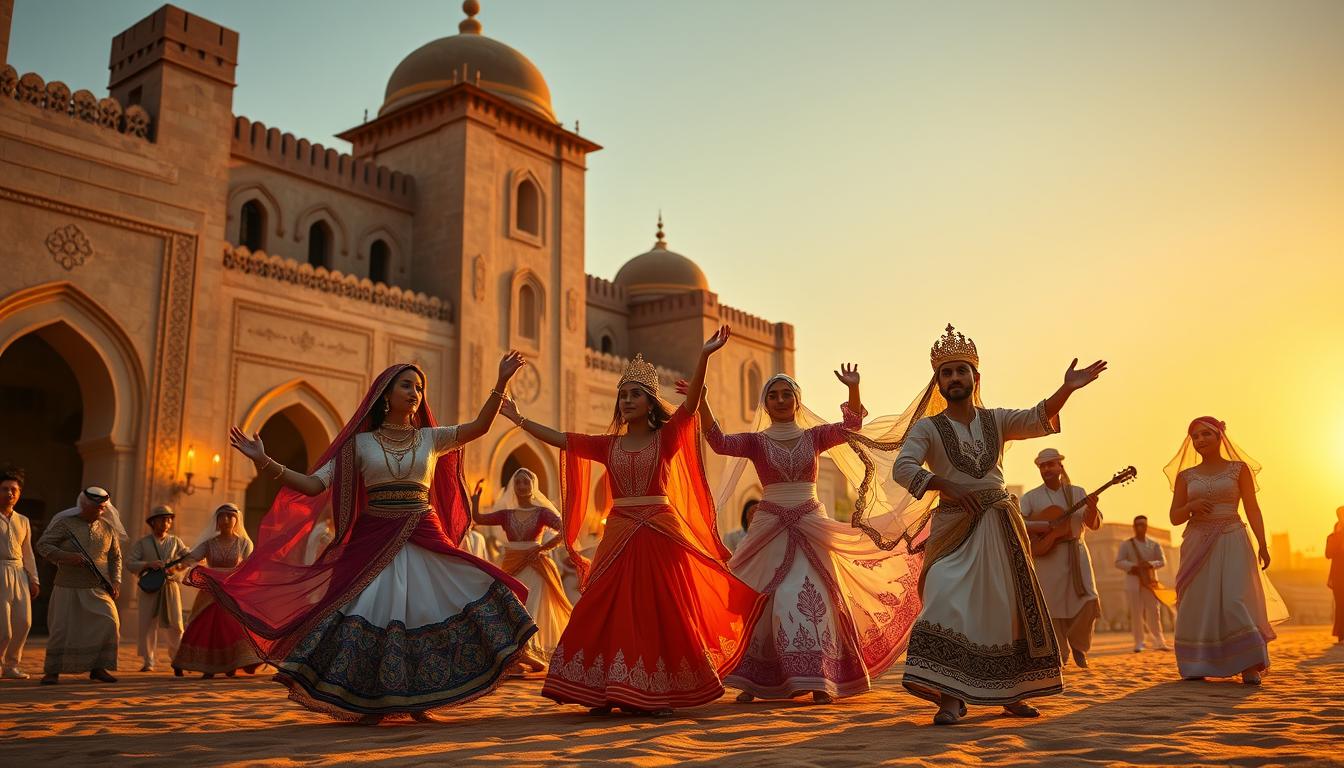
Launch of Art and Cultural Districts
The UAE has created special spaces for artistic expression. Alserkal Avenue in Dubai and Saadiyat Cultural District in Abu Dhabi are hubs for creativity. These areas have galleries, performance spaces, and educational institutions, making the arts community vibrant.
The Etihad Museum and the Museum of the Future show the UAE’s vision. They bridge the past and future, offering insights into Emirati culture and history. The Coffee Museum and Al Shindagha Museum explore specific aspects of local heritage.
These milestones in UAE arts show the country’s dedication to a thriving cultural scene. By investing in festivals, districts, and museums, the UAE has woven a rich tapestry of artistic experiences. These offer valuable lessons for other nations looking to grow their cultural sectors.
Incorporating UAE’s Lessons Globally
The UAE’s cultural growth is a lesson for countries everywhere. Women hold 30% of leadership roles, showing strong gender equality. This, along with the UAE’s mix of tradition and innovation, makes it a global model.
Adapting UAE’s Model for Growth
Countries can learn from the UAE’s blend of old and new. The UAE’s strategic plans, like the UAE Government Annual Meetings, show its drive for progress. With big jumps in trade and investment, the UAE’s economic model is a lesson for others.
Promoting Multicultural Artistic Collaboration
The UAE’s way of celebrating cultural diversity is something the world can follow. It ranks high in adaptability and soft power, showing the value of working together. This can inspire other nations to embrace diverse artistic expressions and foster understanding.
Ensuring Sustainability in Cultural Practices
Sustainability is key in the UAE’s cultural approach. The UAE values education in keeping traditions alive. By teaching kids about community and encouraging volunteering, it’s building a future that values heritage and social welfare.
